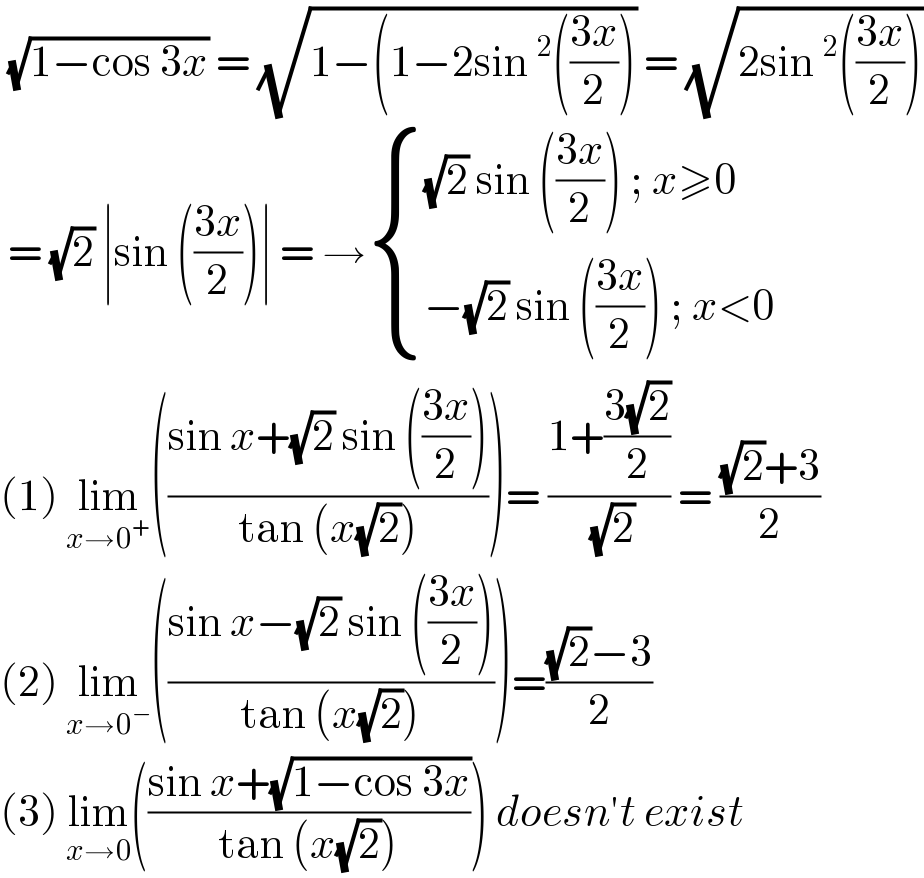
Question and Answers Forum
Question Number 124010 by john_santu last updated on 30/Nov/20

Answered by liberty last updated on 30/Nov/20

Commented by Mammadli last updated on 30/Nov/20

Commented by john_santu last updated on 30/Nov/20

Commented by malwan last updated on 30/Nov/20

Commented by bharathkumar last updated on 30/Nov/20

Commented by Dwaipayan Shikari last updated on 30/Nov/20

